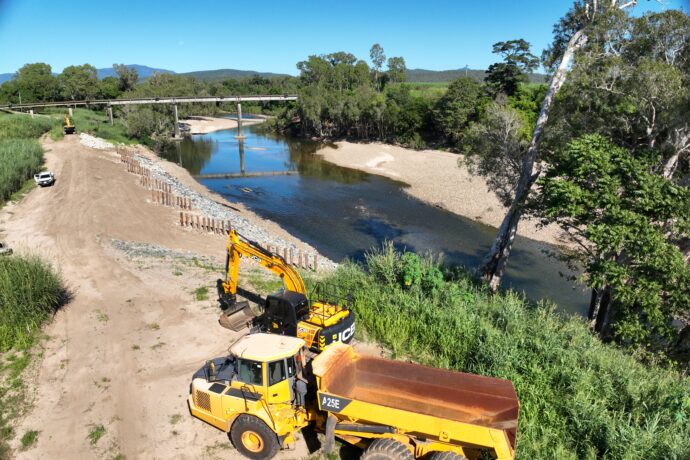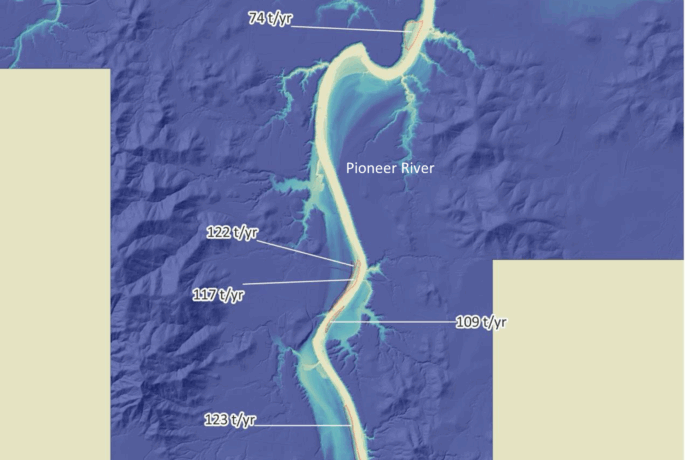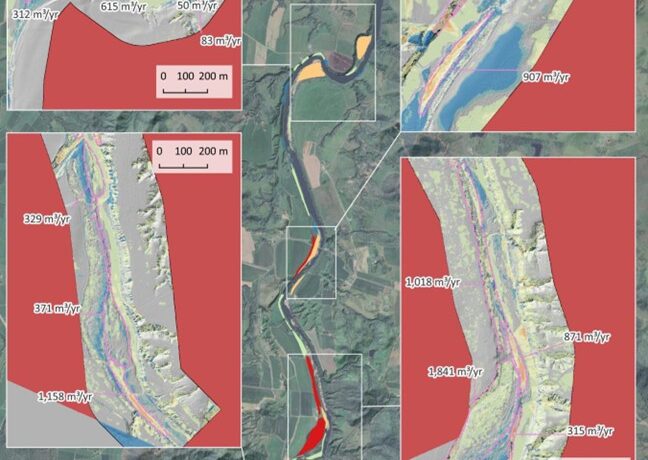Real change happens when projects are guided by data, scaled to the landscape, and delivered with the community at heart. The work in the Mackay Whitsunday Isaac (MWI) region focuses on restoring streambanks and river systems, improving water quality, and building resilience in the landscapes that flow to the Great Barrier Reef.
A Landscape-Scale Approach
The MWI region is made up of small catchments each flowing into the Great Barrier Reef. To manage these systems, Reef Catchments adopt a whole-of-system approach, integrating science, planning, and on-the-ground action to achieve lasting ecological outcomes.
Through regional streambank and geomorphological studies, we identify erosion risks, system stability, and restoration opportunities. This information helps us design projects that align with funder priorities, while continuing to drive our long-term vision for healthier waterways, stronger ecosystems, and resilient communities.
From Data to Action
Over the past decade, a suite of assessments, including stream type analysis, reach summaries, erosion prioritisation studies, and hot spot mapping, has guided our work. These studies not only highlight where interventions are needed but also ensure investments are targeted, efficient, and backed by evidence. By layering this knowledge and consistently applying it to funding applications, Reef Catchments has been able to scale up restoration efforts across the region. Projects such as the Landscape Repair Program continue to build on these foundations, enabling our largest restoration initiatives to date.
Highlight Projects and Achievements
With support from government funding and partnerships, Reef Catchments has delivered multiple large-scale projects that are transforming riparian landscapes. A few standouts include:
- Reef Trust 4 – 37 project sites, 70,000+ trees planted, 25 ha of riparian corridors restored, and more than 45 ha of land protected by fencing.
- Reef Trust 7 – Protected 5.84 km of streambank, revegetated 2.21 ha, engaged over 90 landholders, and saved more than 2,800 tonnes of fine sediment each year.
- Monsoon Trough Recovery (Stages 1 & 2) – Together, these projects established over 12 engineered sites and planted more than 26,000 trees, reducing more than 10,000 tonnes of fine sediment annually.
- Reef Assist 2.0 – Engineered streambank and gully works, with 4,500 local native plants added, cutting sediment loads by over 1,000 tonnes per year.
- Preparing Australian Communities – Nature-Based Solutions – Engaged 144 landholders, installed 229 km of fencing, protected 152 km of streambank, and improved over 450 ha of riparian land.
Outcomes
Thanks to this collective effort, the region has already achieved:
- ~25,000 tonnes per year of fine sediment reduction at the coast.
- 125,000+ native riparian plants established.
- Over 230 landholders and properties engaged in sustainable land management.
These achievements not only improve local ecosystems but also safeguard the Great Barrier Reef by reducing sediment and nutrient runoff.

Looking Ahead
Our commitment is long-term. By combining local knowledge, stewardship, and science-backed interventions, Reef Catchments continues to drive meaningful landscape change. These projects are building resilience, not only for our waterways and catchments but also for the communities and industries that depend on them.

